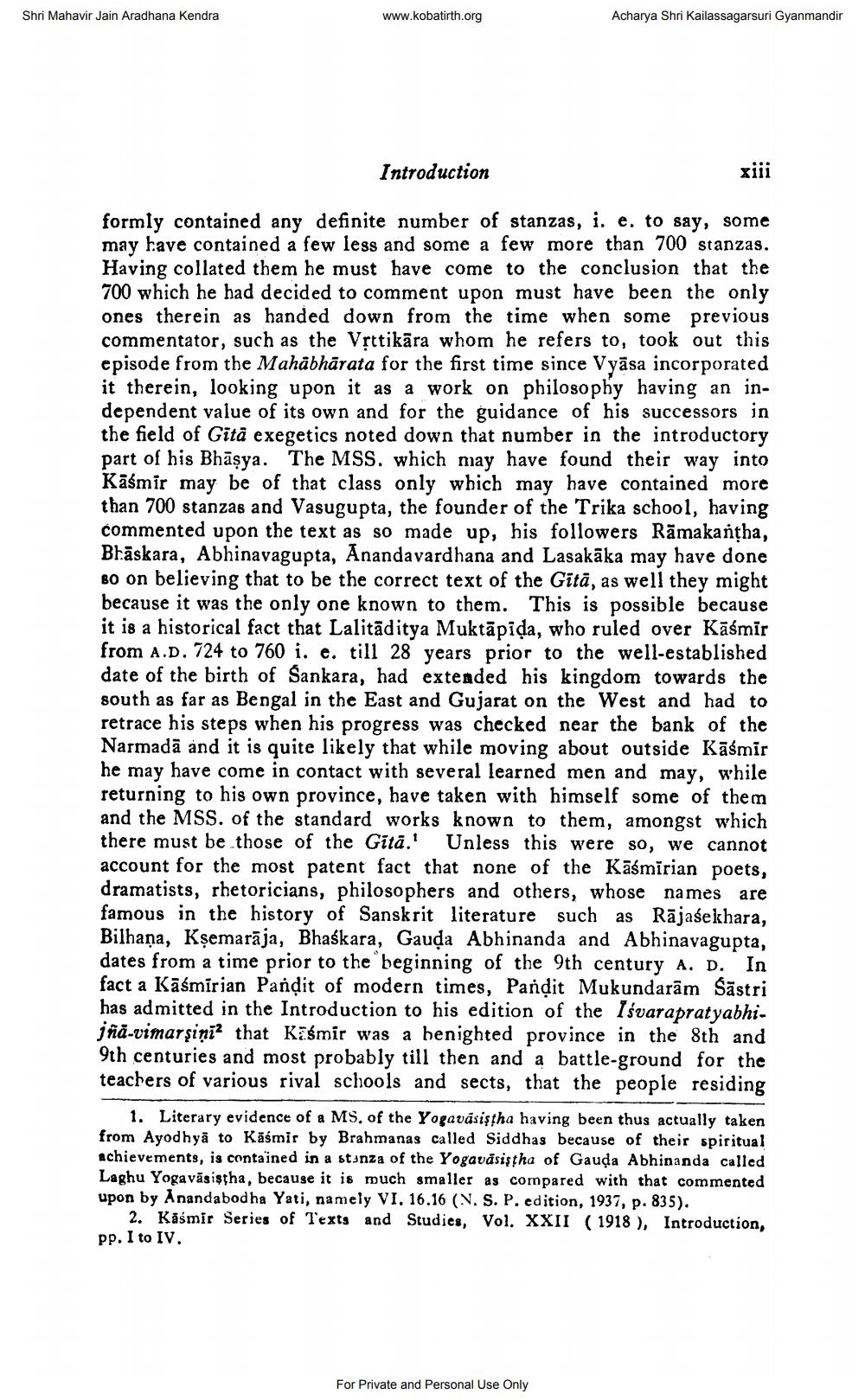________________
Shri Mahavir Jain Aradhana Kendra
www.kobatirth.org
Acharya Shri Kailassagarsuri Gyanmandir
Introduction
formly contained any definite number of stanzas, i. e. to say, some may have contained a few less and some a few more than 700 stanzas. Having collated them he must have come to the conclusion that the 700 which he had decided to comment upon must have been the only ones therein as handed down from the time when some previous commentator, such as the Vsttikāra whom he refers to, took out this episode from the Mahābhārata for the first time since Vyāsa incorporated it therein, looking upon it as a work on philosophy having an independent value of its own and for the guidance of his successors in the field of Gità exegetics noted down that number in the introductory part of his Bhāsya. The MSS. which may have found their way into Kāśmir may be of that class only which may have contained more than 700 stanzas and Vasugupta, the founder of the Trika school, having commented upon the text as so made up, his followers Rāmakantha, Bhāskara, Abhinavagupta, Anandavardhana and Lasakāka may have done Bo on believing that to be the correct text of the Gitā, as well they might because it was the only one known to them. This is possible because it is a historical fact that Lalitāditya Muktāpida, who ruled over Kāśmir from A.D. 724 to 760 i. e. till 28 years prior to the well-established date of the birth of Sankara, had extended his kingdom towards the south as far as Bengal in the East and Gujarat on the West and had to retrace his steps when his progress was checked near the bank of the Narmadā and it is quite likely that while moving about outside Kāśmir he may have come in contact with several learned men and may, while returning to his own province, have taken with himself some of them and the MSS. of the standard works known to them, amongst which there must be those of the Gitā. Unless this were so, we cannot account for the most patent fact that none of the Kāśmirian poets, dramatists, rhetoricians, philosophers and others, whose names are famous in the history of Sanskrit literature such as Rājasekhara, Bilhaņa, Kșemarāja, Bhaskara, Gauda Abhinanda and Abhinavagupta, dates from a time prior to the beginning of the 9th century A. D. In fact a Kāśmirian Pandit of modern times, Pandit Mukundarām Sāstri has admitted in the Introduction to his edition of the 1śvarapratyabhijñā-vimarsini? that Käśmir was a benighted province in the 8th and 9th centuries and most probably till then and a battle-ground for the teachers of various rival schools and sects, that the people residing
1. Literary evidence of a MS. of the Yogavāsiştha having been thus actually taken from Ayodhya to Kāśmir by Brahmanas called Siddhas because of their spiritual Achievements, is contained in a stanza of the Yogavāsistha of Gauda Abhinanda called Laghu Yogaväsistha, because it is much smaller as compared with that commented upon by Anandabodha Yati, namely VI. 16.16 (N. S. P. edition, 1937, p. 835).
2. Käśmir Series of Texts and Studies, Vol. XXII (1918 ), Introduction, pp. I to IV.
For Private and Personal Use Only




